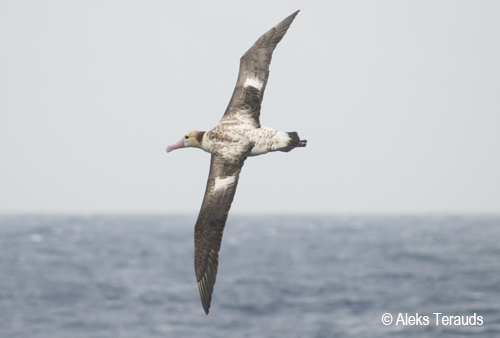An online article in Hakai Magazine reports on research which shows that fishing at night instead of using bird-scaring lines (BSLs) in the US Pacific longline fishery for Black Cod Anoplopoma fimbria, also known as Sablefish, is a better choice to reduce mortality of seabirds, especially the Near Threatened Black-footed Albatross Phoebastria nigripes, but also of Short-tailed Albatrosses P. albatrus, which are considered globally Vulnerable.
 ,
,
Short-tailed Albatross, photograph by Aleks Terauds
Bycatch rates of birds were 30 times lower at night than during the day, according to the research carried out with vessels using a floating longline that sinks more slowly by Amanda Gladics, Ed Melvin and others (click here), and it seems that the fishers prefer this to running the risk of entangling their longline with BSLs when day setting.
The Pacific Fishery Management Council is now considering whether to adopt this new best practice as part of its regulations for the fishery. The review process is set to start in September 2018 with the objective of having a regulation in place by April 2020 (click here).
With thanks to Ed Melvin, Washington Sea Grant.
References:
Braun, A, 2017. How not to kill an albatross. Hakai Magazine, November 13, 2017.
Gladics, A.J., Melvin, E.F., Suryan, R.M., Good, T.P., Jannot, J.E. & Guy, T.J. 2017. Fishery-specific solutions to seabird bycatch in the U.S. West Coast sablefish fishery. Fisheries Research 196: 85-95.
John Cooper, ACAP Information Officer, 15 January 2018

 English
English  Français
Français  Español
Español